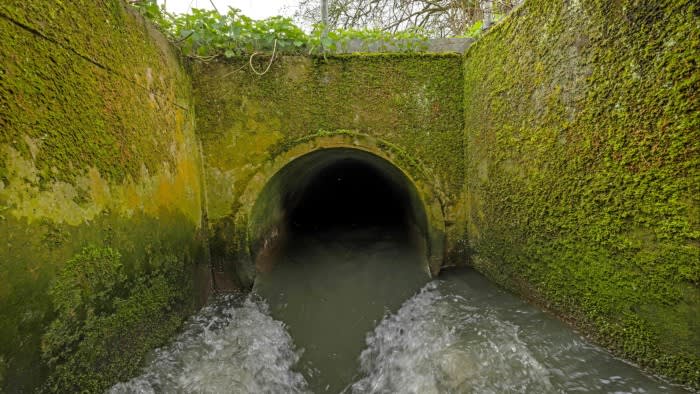Unlock the Editor’s Digest for free
Roula Khalaf, Editor of the FT, selects her favourite stories in this weekly newsletter.
Two of Britain’s biggest water companies have failed to map large parts of their sewage networks, underscoring the challenge facing privatised utilities as they try to fix their poor environmental record and reduce spills.
Thames Water and Southern Water only mapped the pipes as they worked on them, leaving a large proportion of the network unchecked, the two companies revealed in responses to freedom of information requests.
Thames Water, which has 16mn customers, equivalent to a quarter of the UK’s population, said more than 30 per cent of its network was not mapped. Southern Water, with 4.7mn customers, put the figure at about 40 per cent.
In its response, Southern Water said that most of the infrastructure had been transferred from local authorities at privatisation in 1989 and the cost of “physically mapping the network was considered prohibitive”.
Pollution campaigners said the failure to track the state of their ageing infrastructure not only complicated the task facing the utilities as they sought to reduce spills but also had potential financial implications as they would be unable to assess how much remedial work was needed.
“If they don’t know where the sewers are, they will also be ignorant of the age and condition of the pipes, raising serious questions about the value and liabilities associated with the infrastructure as companies like Thames Water start to unravel,” said Ash Smith, of Windrush Against Sewage Pollution campaign.
Thames Water is on the brink of financial collapse after being hit by higher interest rates on its £18bn debt. Southern Water is also under close watch over its financial stability by regulator Ofwat.
Both companies have been hit by large fines for pollution offences in recent years, with inadequate maintenance and investment in the sewage infrastructure blamed as the main causes.
The two companies have asked the regulator to approve substantial increases in customer bills to help finance the repairing of leaks and prevent spills.
Southern Water has asked for the steepest bill increase in the country — a rise of 74 per cent that would see bills rise to about £727 a year by 2029-30 before inflation.
Thames has asked for a 40 per cent increase to £608, before inflation, but has said it may ask for another rise if it can find the supply chain to deliver work before 2030. Ofwat is to provide a draft ruling on bill rises on June 12.
Southern said it was working with six other water utilities, including Thames, to share “best practice on new sewer mapping approaches and to design an accurate and effective sewer mapping approach”.
Thames said the collaboration was designed to “co-ordinate an industry-wide standard. It was also running a pilot study that could see it use a “combination of remote sensors to chart the location of manholes, highway drains and sewerage pipes”.
Although the water companies often attribute failures to the Victorian infrastructure, most of the pipe network was replaced before privatisation.
Thames Water has the highest number of Victorian-era pipes at 20 per cent, while at Southern it is just 8 per cent, according to an analysis of available data by the Windrush Against Sewage Pollution.
Earlier this month, the Financial Times revealed that the 16 water monopolies paid out a total of £78bn in dividends in the three decades since privatisation to March 2023, while building up £64bn in borrowings over the same period. The utilities were privatised debt-free.
In the 30 years to 2021, household water bills in England and Wales increased by 1.6 per cent a year above inflation, a cumulative rise of 60 per cent in real terms, according to the National Infrastructure Commission.
Southern Water and Thames Water declined to comment further.

Robert Johnson is a UK-based business writer specializing in finance and entrepreneurship. With an eye for market trends and a keen interest in the corporate world, he offers readers valuable insights into business developments.








